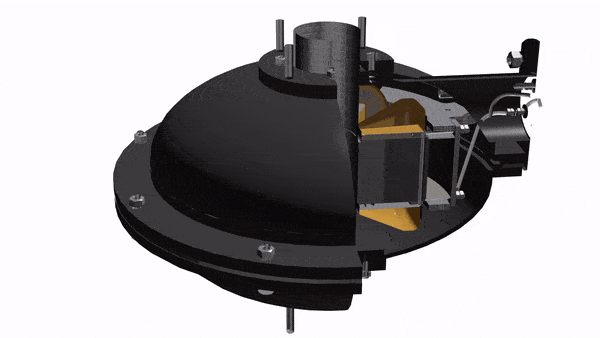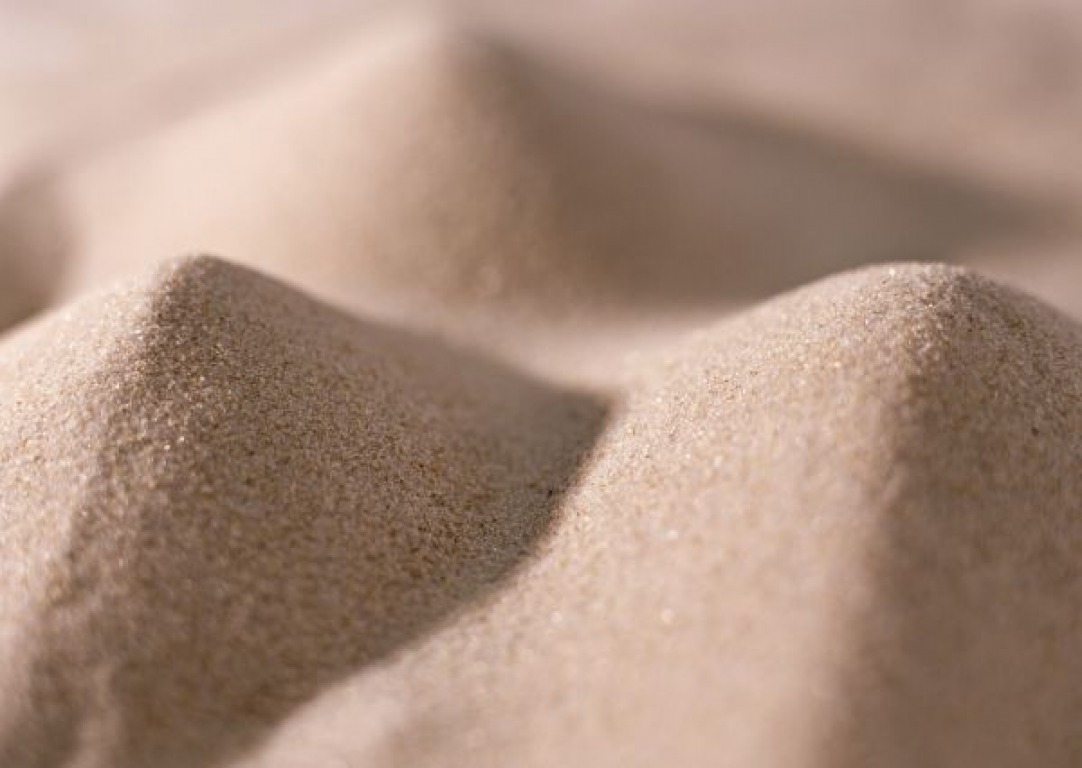Quartz and quartz sand are natural materials. There is a lot of quartz in the Earth’s crust, and the material has several important properties, such as high mechanical strength and adsorption capability. Quartz can be a part of other minerals, bringing its content in the Earth’s crust to over 60%. It is mostly used in the form of sand in the industry.
Fine pulverization of minerals changes their reactivity and intensifies processes where the minerals are used. The dispersion process changes physical and chemical properties of the material.
Quartz sand granulometric composition after grinding in the AVS
| Initial fraction size, micron | Amount of sand of the fractions, %, depending on grinding time, minutes |
||||
| 1 | 3 | 5 | 7.5 | 10 | |
| +500 | 14 | 13 | 6 | 3 | 1 |
| +200 | 62 | 34 | 15 | 3 | 1 |
| +160 | 3 | 2 | 1 | 0 | 0 |
| +100 | 5 | 5 | 3 | 1 | 1 |
| +63 | 2 | 4 | 5 | 3 | 2 |
| -63 | 14 | 42 | 70 | 90 | 95 |
APPLICATIONS OF QUARTZ SAND
Applications of this material are practically limitless. It is stable to chemical, mechanical and atmospheric factors and flows well. The material is used in:
- Dressing compounds;
- Parget;
- Fire-proof materials;
- Steel production;
- Sanding of sports grounds, house yards etc;
- Production of molds for foundries;
- Removal of metal corrosion;
- Production of enamel and paint;
- Construction of floors;
- Drinking water and waste water filtration;
- Production of fine grain concrete and polymer concrete;
- Production of glass and fiberglass.
QUARTZ SAND PRODUCTION METHODS
There are two methods of quartz sand production, natural and artificial. In the former case, the material is extracted from quarries, while in the latter, the quartz is pulverized and purified, then sifted.
While selecting the production technique, it should be noted that each industry has its own requirements in terms of granule size, smoothness, color etc. For instance, decorative architectural applications require smooth fine to medium granules, while jagged granules work best in sandblasting.
Jet mills are used to pulverized materials with particles size below 3 micron. In these machines, streams of air carrying the material collide. Particles are pulverized due to impacts and friction during the collision.
Vibration mills are designed for pulverization of materials with particle size from several millimeters to several microns. These devices consist of a grinding chamber with a vibrator. When the shaft of the vibrator rotates, a variable force is generated, making the chamber move a circular pattern. The internal surface of the chamber and the external surface of the vibrator transfer the motion to the particles of the processed material. Impacts of the particles create mechanical tension, which changes the structure of the material and promote its interaction with the media filling the empty space inside the chamber. The biggest drawback of vibration mills is the abrasion of the chamber, which does not only decrease lifetime of the equipment, but causes contamination of the material with abrasion products.
Planetary mills facilitate fine and superfine pulverization of materials. The device consists of three of four drums, which rotate around a central axis and, at the same time, around their own axes in the direction opposite the rotor.
With all the advantages, such as high capacity and intensive pulverization, planetary mills also lack in terms of scaling and rapid wear. Besides, these devices are mostly used of wet milling.
GLOBECORE ELECTROMAGNETIC MILLS

As an alternative to the above devices for quartz sand production, GlobeCore offers electromagnetic mills: the AVS-100 and AVS-150 vortex layer devices. The devices is powered by industrial three phase power supply. The design resembles an asynchronous electric motor with the rotor substituted for by the milling chamber. The processed material is fed into the chamber with ferromagnetic particles, which interact with the magnetic inducer’s rotating EM field.
Physical and chemical processes in the vortex layer generators are intensified due to intensive dispersion and stirring of the material, acoustic and electromagnetic influence, high local pressures, electrolysis and other factors. All of these processes occur in the same chamber at the same time.
The vortex layer devices have one important advantage: they can easily be retrofitted into the existing production lines to improve product quality. By combining several units consecutively or in parallel, it is possible to further increase processing capacity.
Research shows that it only takes 2 minutes to pulverize 200 g of quartz sand to 1 micron in the electromagnetic mill, using 300 grams of 3 mm ferromagnetic particles.

